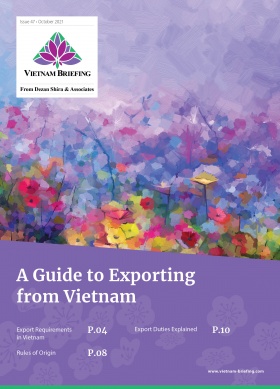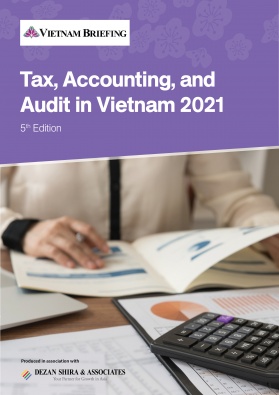Vietnam’s Business Recovery: 4 Industries to Watch
- As Vietnam gradually reopens and heads towards a new normal, we look at key industries that have suffered and how they are geared for recovery.
- Despite supply chain disruptions, Vietnam continues to maintain a positive outlook maintaining its position as a manufacturing hub.
- While’s challenges remain, Vietnam’s medium-term outlook helped by climbing vaccination rates and consumer demand will ensure its speedy recovery.
Vietnam is stepping up its vaccination efforts and loosening COVID-19 restrictions after months of tough measures. A positive outlook is foreseen with Vietnam’s exports likely to increase by 10.7 percent at the end of 2021 and economic growth momentum strengthening further to 6.8 percent year on year in 2022. However, the easing of restrictions poses challenges to the workforce as thousands of migrant workers return to their home towns, resulting in significant labor shortages for many businesses.
Over the medium-term outlook, key industries such as textiles and garments as well as electronics are expected to create promising scenarios for Vietnam’s economy, driving the country’s GDP and highlighting its position as a dynamic manufacturing hub.
COVID-19: Challenges to key industries
According to EuroCham, 18 percent of its European members shifted some production to other countries and 16 percent have considered doing so, however, none have left Vietnam.
Due to Vietnam’s strict lockdown, tech giants such as Apple, Google, Amazon, and their suppliers also saw their production plans impeded.
Amazon’s production of smart doorbells, security cameras, and speakers in Northern Vietnam were affected. However, exports of electronics and metal products were rare spotlights amid Vietnam’s worsening trade picture. The exports of mobile phones and components reached US$50.9 billion last year, down 1 percent compared to 2019 as influenced by COVID-19.
Factories in the textiles and garments industry struggled the most due to the strict lockdown since June. Companies in the apparel and footwear industry were also subject to contractual penalties for delays in delivery, while the risk of order cancellations or reduction of products in 2022 is significant. Adidas itself witnessed a US$600 million loss in revenue due to production delays this year.
However, with the earliest decisions to reopen many critical commercial hubs, Vietnam is on the right track to bright recovery prospects.
Electronics: Power of the digitalized world
Despite the challenges, Vietnam’s electronics industry continues to grow, owing massively to the increasing presence of products with higher technology and added value such as precision mechanical products and electronic products and components.
The industry brought US$77.58 billion within the past nine months of 2021 and export value topped US$36.56 billion. It also benefits from a diverse range of export partners such as the US.
In August 2021, electronics businesses filed eight recommendations with the government, emphasizing the importance of vaccinations for their employees, solutions to safe production, and a quest for a 50 percent deduction for all types of tax and a payment extension of six to 12 months. The government has addressed these in Resolution No 105/NQ-CP in September, aiming to support businesses with four groups of solutions. The solutions include quality inspection and free vaccinations, facilitation of efficient production, cost-cutting, and opportunities for laborers and experts.
According to a recent report from Fitch Solutions, Vietnam’s consumer electronics industry will continue to grow further due to the global vaccine rollout and stronger external demand for important export industries.
Textiles and Garments: A shaky rebound
Vietnam’s textile and garment industry has shown signs of prosperity with increasing purchasing power and pre-orders until the end of 2021 and early 2022.
Compared to many competitors, Vietnam’s textile and garment industry still has certain advantages in terms of products’ quality, techniques, the ability to meet strict requirements on labor, the environment, and notably tariff preferences under various free trade agreements (FTAs).
However, the trajectory to recovery is still hindered by the shutdown of several factories and many others having had to apply the 3-on-site model, which involves workers eating, sleeping, and working on-site, causing increased costs and losses.
The National Assembly (NA) has decided to waive many of the fees and taxes for businesses affected by the pandemic for the rest of 2021. The government continues to take safety measures such as accelerating vaccination rates, mobilizing sources to get more vaccines, and negotiating drugs to combat COVID-19.
With the current vaccine coverage, factory owners can expect to fully resume operations in the “new normal” from the second half of 2022.
Tourism: A plan to revitalize
The tourism industry unquestionably remains one of the most heavily affected. Vietnam received only 3.7 million international visitors and 56 million domestic travelers in 2020, down 80 percent and 34.1 percent, respectively, from a year earlier. As a result, the country’s tourism revenue decreased 58.7 percent year on year.
The government has announced plans to reinvigorate tourism, starting with areas in green zones where domestic tourists are allowed to travel independently or book tours. Hotels and tourist attractions are allowed to operate at 50 percent of their maximum capacity following COVID-19 prevention protocols.
From November Vietnam plans to reopen key tourist destinations including Kien Giang, Quang Nam, Khanh Hoa, Da Nang, and Quang Ninh provinces to vaccinated visitors from countries with low COVID-19 risk as examined via vaccine certificates with a negative COVID-19 test result before entering. Tourists are expected to come from some parts of Europe, the Middle East, North-East Asia, South-East Asia, North America, and Australia.
A detailed plan has yet to be announced due to reasonably low vaccination rates among the residents, however, Vietnam expects to fully reopen to foreign tourists by June 2022.
Agriculture: Digitalization is key
The agriculture sector took a major hit. Farmers were unable to sell their produce while consumers struggled to buy food in the southern provinces resulting from the temporary closures of both wholesale and retail markets.
Despite the influence of COVID-19, the agriculture sector increased by US$3.3 billion in total trade value within the first nine months of 2021. During the same period, the agricultural, forestry, and fishery sector expanded by 2.74 percent, contributing 23.52 percent to the overall growth of the economy. Vietnam’s government has developed plans to facilitate production, supply, and consumption of agricultural products to support local farmers.
In the most recent “Shaping Vietnam’s digital agriculture until 2035′ forum, the Minister of Agriculture and Rural Development pledged to support digital transformation in agriculture as the sector is the “backbone” of the economy in difficult times. Digital application is needed in farming techniques and capital to restore production and supporting businesses in terms of capital, interest rates, and the transportation of materials and products.
Following the ease of restrictions, some farmers and distributors remain hesitant to reopen their operations due to the large production cost, general pandemic prevention, and continued wage payments for currently laid-off employees.
Responding to this, the Ministry will strengthen connections with companies such as Viettel Post, VNPT Post, and goods-delivery businesses to promote electronic transactions, providing support for the trading of agricultural products on e-commerce platforms.
What’s next?
Despite the pandemic, Vietnam remains resilient and is well-placed for benefits as companies seek to diversify global supply chains and decrease reliance on China while adopting the China plus one strategy. The implementation of signed free trade agreements will help Vietnam increase the quantity and quality of trade and investment, diversify partners and participate in value chains.
There will be challenges. Consumer spending is not expected to return to pre-pandemic levels at least for another year. While GDP growth for 2021 has not been able to keep up with government targets. Nevertheless, consumer demand and economic growth will rebound at a fast rate until 2023 and subsequently is expected to outpace rivals returning Vietnam’s growth and FDI attraction to pre-pandemic levels.
About Us
Vietnam Briefing is produced by Dezan Shira & Associates. The firm assists foreign investors throughout Asia from offices across the world, including in Hanoi, Ho Chi Minh City, and Da Nang. Readers may write to vietnam@dezshira.com for more support on doing business in Vietnam.
We also maintain offices or have alliance partners assisting foreign investors in Indonesia, India, Singapore, The Philippines, Malaysia, Thailand, Italy, Germany, and the United States, in addition to practices in Bangladesh and Russia.
- Previous Article Vietnam Issues Eligible Criteria, Incentives for SMEs: Decree 80
- Next Article Implementing Guidelines on E-commerce and Digital Businesses: Circular 80







